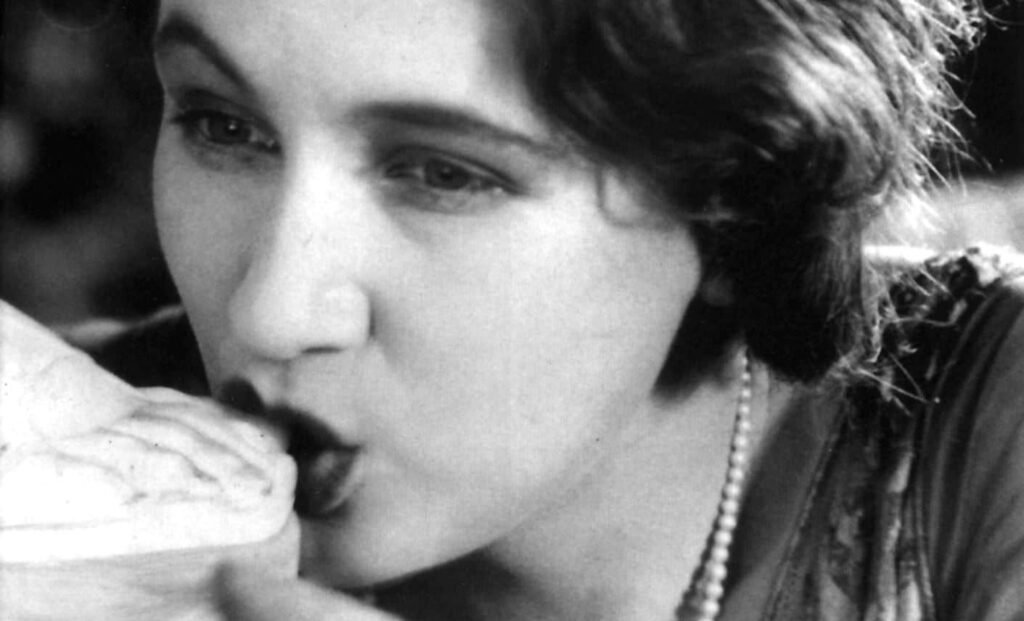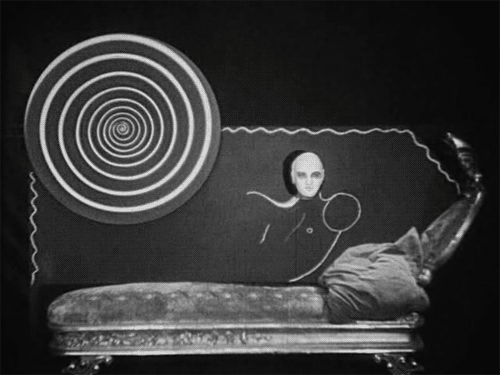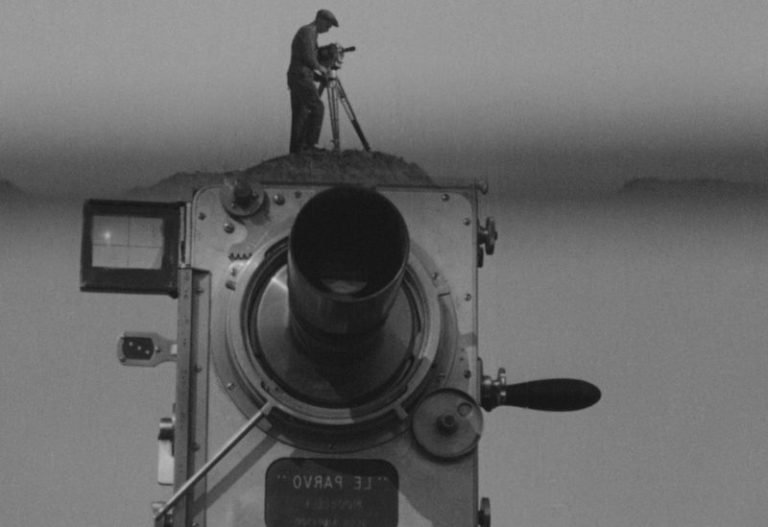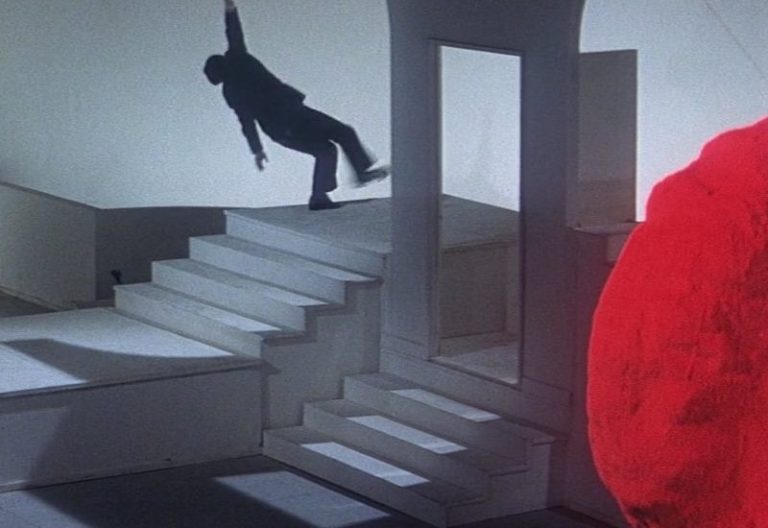surrealist cinema
est. early 1920s – late 1930s
Surrealist cinema originated in the 1920s as an extension of the broader Surrealist art movement, which itself grew out of the Dada movement that arose during and after World War I. The devastation of the war led many artists and intellectuals to reject traditional values and forms of expression.
Published by: CinemaWaves Team | Filed Under: Film Movements
Origins of the Surrealist Cinema
The Surrealist movement was officially launched by the publication of Andre Breton’s Manifesto of Surrealism in 1924. Breton, a poet and a critic, outlined the goals of Surrealism as exploring the unconscious mind, dreams, and the irrational, influenced by the psychoanalytic theories of Sigmund Freud. Breton and his fellow Surrealists believed that true creativity emerged from tapping into the subconscious and liberating the mind from the constraints of rational thought.
Cinema, with its capacity to blend reality and fantasy, quickly became a favored medium for Surrealist artists. The movement’s first significant forays into film took place in France, where many key figures of Surrealism were based. The experimental nature of cinema allowed these artists to explore new forms of visual expression and narrative structure, making it an ideal platform for their revolutionary ideas. Early Surrealist films were influenced by various contemporary and historical sources:
Freudian psychoanalysis: Freud’s work on dreams and the unconscious provided a theoretical foundation for Surrealist artists, who sought to depict the irrational and the dreamlike.
Literary surrealism: Surrealist literature, which employed automatic writing (psychography) and stream-of-consciousness techniques, influenced the non-linear and associative narratives seen in Surrealist films.
Avant-garde art movements: The experimental approaches of Dadaism, Cubism, and Abstract Art shaped the visual and thematic elements of Surrealist cinema, encouraging abstraction and non-representational imagery.

Characteristics of the Surrealist Film
Surrealist cinema is defined by several distinctive characteristics that set it apart from other film movements. These elements work together to create a unique viewing experience that challenges traditional notions of narrative, visual style, and the nature of reality.
Dreamlike imagery: Surrealist films are known for their bizarre visuals that evoke the logic of dreams rather than reality. Images are designed to surprise, unsettle, and provoke thought. Examples include melting clocks, disjointed body parts, and impossible landscapes.
Non-linear narratives: Traditional plot structures are abandoned in favor of fragmented, disjointed narratives that mirror the unpredictability of the subconscious mind. This approach can make Surrealist films difficult to follow but encourages viewers to engage with the film on an emotional and intuitive level rather than a logical one.
Symbolism: Objects, characters, and settings in Surrealist films are frequently imbued with symbolic meaning, reflecting deeper psychological or philosophical themes. These symbols often draw from mythology, religion, and personal iconography.
Juxtaposition: Surrealist filmmakers place incongruous elements side by side to create striking contrasts and challenge viewers’ expectations. This technique, known as juxtaposition, can produce a sense of shock and disorientation, emphasizing the irrational and unexpected nature of the subconscious.
Exploration of the unconscious: Surrealist films delve into themes of desire, sexuality, fear, and the irrational, seeking to uncover hidden aspects of the human psyche. By presenting these themes in a raw and unfiltered manner, Surrealist cinema aims to reveal the deeper truths that lie beneath the surface of everyday experience.


Famous Surreal Films and Directors
Luis Bunuel is perhaps the most renowned director associated with Surrealist cinema. His collaborations with artist Salvador Dali resulted in some of the most iconic films of the genre, “Un Chien Andalou” from 1929 being the most important. This short film, is famous for its shocking and nonsensical imagery, one being the infamous eye-slitting scene. It eschews classical narrative in favor of a series of dreamlike, disjointed sequences. Another important collaboration with Dali, “L’Age d’Or” (1930) critiques societal norms and the Catholic Church through a series of surreal, controversial vignettes.
Jean Cocteau was a multi-talented artist, known not only for his contributions to Surrealist cinema but also for his work as a poet, playwright, and painter. His unique vision and innovative techniques in films like “The Blood of a Poet” (1930) and “Orpheus” (1950) have cemented his legacy as a pivotal figure in the avant-garde and surrealist movements.
Last but not least is Maya Deren. She was a pioneering filmmaker and key figure in American avant-garde cinema, renowned for her innovative and poetic approach to film. Her groundbreaking work, “Meshes of the Afternoon (1943)” co-directed with Alexander Hammid, is today a landmark of Surrealist cinema. It uses repetitive, dreamlike imagery to explore themes of identity, perception, and reality.
Legacy and influence of the Surrealist Cinema
The legacy of Surrealist cinema extends beyond its initial period of activity in the early 20th century. Its exploration of the unconscious mind and its challenge to traditional narrative forms continue to inspire filmmakers and artists to this day. Directors like David Lynch, Federico Fellini, Terry Gilliam and Emir Kusturica have incorporated surrealist techniques and motifs into their films, creating works that challenge conventional storytelling and explore the boundaries of reality and imagination.
Lynch’s films, in particular, evoke the unsettling, dreamlike quality of Surrealist cinema, blending the mundane with the bizarre. In academic circles, Surrealist cinema is studied for its innovative techniques and its contributions to the development of avant-garde and experimental film.
The movement has also contributed to the broader cultural understanding of dreams and the unconscious, also influencing literature, visual art, and psychology. Its emphasis on freeing the imagination and breaking the barriers between reality and fantasy has had a lasting impact on the art worldwide.
Refer to the Listed Films for the recommended works associated with the movement. Also, check out the rest of the Film Movements on our website.
In the early 20th century, a cinematic revolution was brewing in the Soviet Union. A group of visionary filmmakers, collectively known as the Soviet Montage School, gathered…
The Japanese New Wave or Nuberu Bagu, as it’s known in Japan, represents a pivotal period in Japanese cinema, marked by a wave of artistic experimentation and…
German Expressionism stands out as one of the most distinctive styles in the era of silent film. Expressionism, as an artistic movement, originally emerged in poetry and…
Experimental film, referred to as avantgarde cinema, is a genre that defies traditional storytelling and filmmaking techniques. It explores the boundaries of the medium prioritizing…
Short films are a versatile and impactful form of cinema, typically ranging in length from a few minutes to around 40 minutes. They serve as a powerful medium…
Arthouse film refers to a category of cinema known for its artistic and experimental nature, usually produced outside the major film studio system. These films prioritize artistic…






